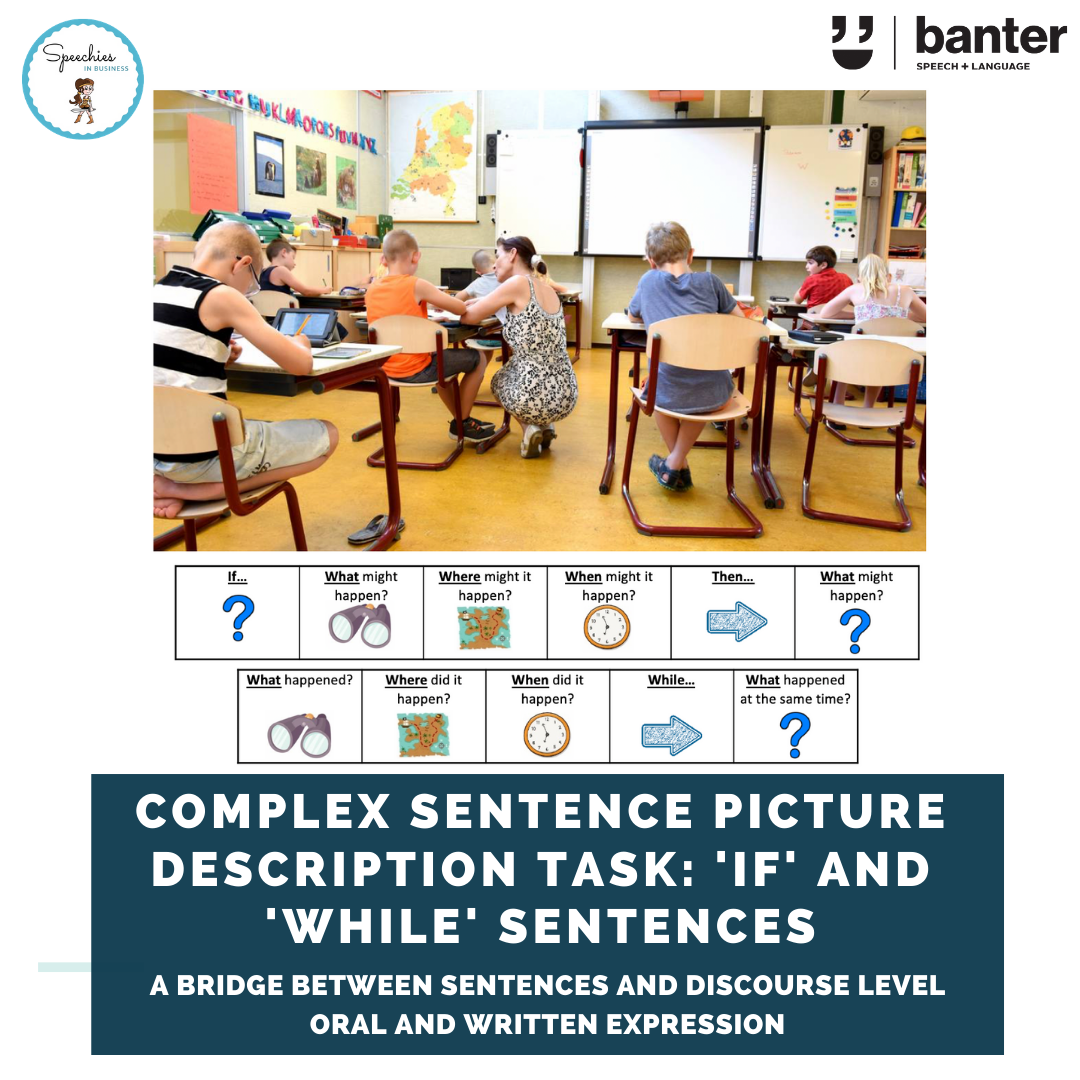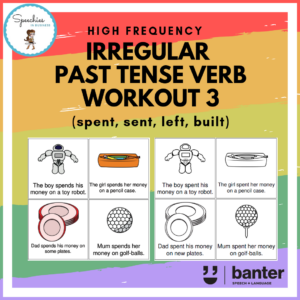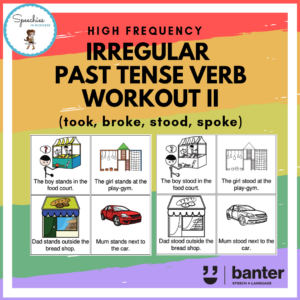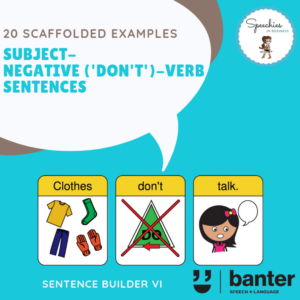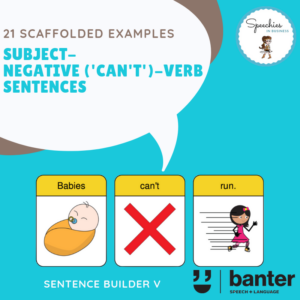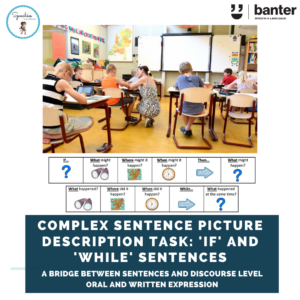(L235) Complex sentence picture description task: ‘if’ and ‘while’ sentences
$5.99 including GST
This picture description resource is designed to help by providing a bridge between highly structured sentence-level exercises (like sentence builders) and discourse level text types (like narratives).
Featuring 25 high quality, interesting photos, this resource includes scaffolds for sentence generation, with prompts for different parts of speech, and different types of clauses, that allow you to target your syntax goal (or goals), while using evidence-based language therapy techniques like recasting, building up and breaking down, extensions and expansions, focused stimulation and modelling.
Description
Many children and others who are learning English as a second language and/or who have developmental language or learning delays have difficulties understanding and using complex sentences. For beginners, our simple, compound sentence and complex sentence sentence builders are a great way to start, with highly structured practice and lots of repetitions. But, to truly learn how to use sentence forms and to transfer those skills to conversation, story telling and other kinds of discourse, you need practice generating your own sentences.
This picture description resource is designed to help by providing a bridge between highly structured sentence-level exercises (like sentence builders) and discourse level text types (like narratives).
Featuring 25 high quality, interesting photos, this resource includes scaffolds for sentence generation, with prompts for different parts of speech, and different types of clauses, that allow you to target your syntax goal (or goals), while using evidence-based language therapy techniques like recasting, building up and breaking down, extensions and expansions, focused stimulation and modelling.
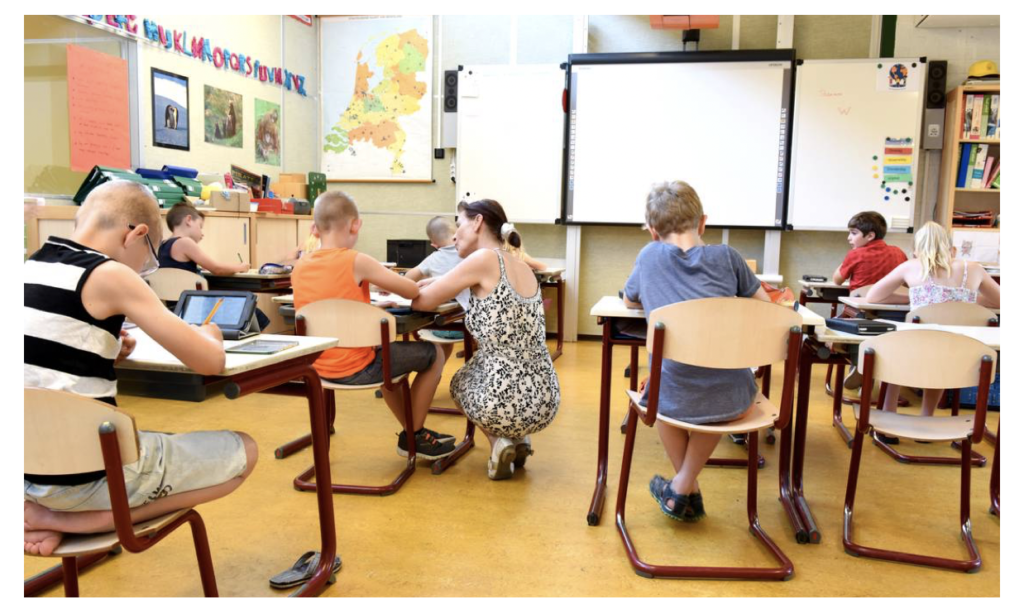

From the picture above, we can use the scaffold prompts to generate ‘if’ and ‘while’ complex sentences, including:
- ‘If the teacher helps the boy in the classroom during science class, then the boy will be able to do his science homework.’
- ‘If the boy doesn’t know how to do the problem, the teacher will give him some help.’
- ‘If the boy in the red shirt doesn’t get back to work soon, the teacher might have to talk to him.’
- ‘If there is a blackout, the children will not be able to do their work.’
- ‘If the class finish their work, the teacher might let them finish class a little earlier than usual.’
- ‘The teacher helped the boy with his work in the classroom this morning while the other students completed their work.’
- ‘The boy in the red shirt looked around the classroom while the teacher was busy helping the boy in the orange shirt.’
- ‘While the class worked hard, the teacher checked in with some of the students.’
- ‘The girl in the second row hummed quietly to herself while she completed the quiz.’
This resource is designed to support the development of both oral language and written expression. It can also be used to generalise or transfer speech fluency (stuttering) and speech sound and articulation gains at the sentence level.
For students who need additional support, you can step down to simple sentences, e.g.:
Subject Verb: The boy is writing.
Subject Verb Object: The boy is talking to the teacher.
Subject Verb Complement: The boy is frustrated.
Subject Verb Adverbial Phrase: The boy is sitting at his desk.
Subject Verb Object Adverbial Phrase: The boy is talking to the teacher in the classroom.
Compound sentences: The boy is working and the teacher is helping. The girl is working but the boy is distracted.
For more advanced students, the pictures can also be used to practice making inferences, predictions, for verbal reasoning tasks, for example:
- Cause/effect: Most of the students are concentrating because they are doing a test.
- Sequencing: Before the test, the girl was very nervous. She finished the test in fewer than forty minutes. After the teacher said ‘pens down’, she smiled with relief and started to think about lunch.
- Problem solving: Why do you think the boy in the red shirt is looking around? What would happen if the fire alarm sounded?
- Prompts for story-writing. Write a story about what would happen here if the boy in the front row fell asleep.
Once mastered, students can progress smoothly to discourse level tasks, including narratives and explanations.
In our speech pathology clinic, we have found this resource useful. We hope you do too!

